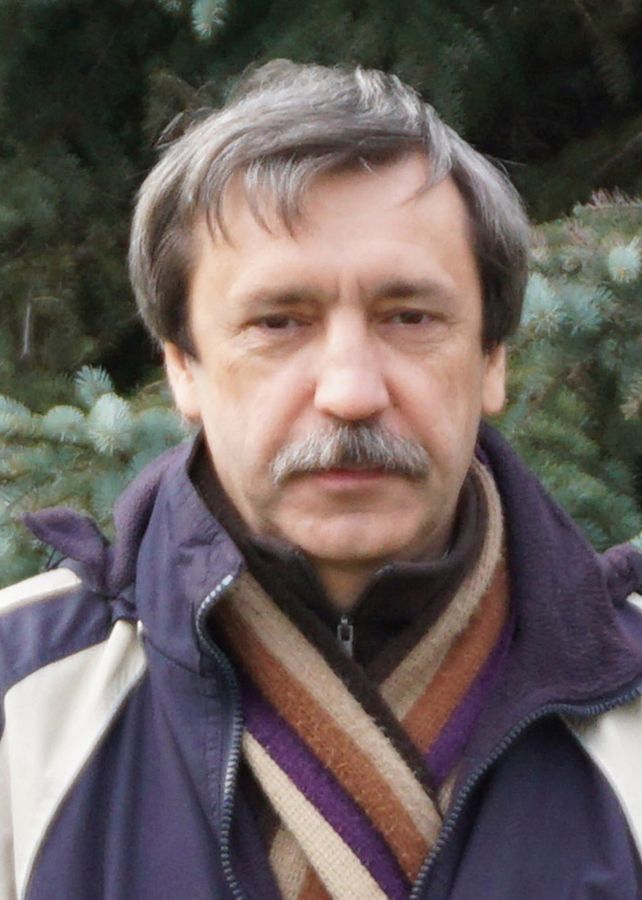This page provides information about the previous schedule of the Leipzig Spin Resonance Colloquium in spring 2023.
Current Program
Time-Resolved Biomolecular Solid State NMR and Micron-Scale MRI Enabled by DNP at Very Low Temperatures
I will describe recent results from two projects in which dynamic nuclear polarization (DNP) at temperatures below 30 K plays an essential role. In the first project, we have developed methods for initiating biomolecular processes such as protein folding, ligand binding, and amyloid peptide oligomerization and then freeze-trapping transient intermediate states in these processes, with time resolution of about one millisecond. We use DNP-enhanced solid state NMR at 25-30 K to characterize the molecular structural properties of intermediate states in the resulting frozen solutions. I will describe the technology and give examples of how this “millisecond time-resolved solid state NMR” approach can provide essential information that (to my knowledge) is not available from any other experimental methods. In the second project, we are attempting to push the spatial resolution of inductively-detected MRI to the level of one micron or less. I will discuss the factors that limit spatial resolution in MRI, explain how NMR signal enhancements from DNP at 5 K allowed us to reach 1.7 micron isotropic resolution in recent experiments, and discuss how further technological and methodological developments may make sub-micron resolution a reality.
The Dutch 14T Whole-Body Imaging System Initiative
In February 2023 the Dutch Science Foundation (NWO) awarded €19M to a consortium of seven Dutch research institutions to establish 14T human MRI scanner in Nijmegen. In this presentation I will cover the salient features of the project, starting with a general introduction covering the background, history and aims of the consortium. I will then describe the technical features, with a particular emphasis on the use of high temperature superconductor for the magnet design. I will explain what we expect to achieve with the system in brain imaging, and briefly cover the application to other organs and the potential use of X-nuclei. I will explain our approach to safety, siting, and the long term development of the project.
Profile
For more information please see the MDR meeting announcement.
Non-traditional applications of NMR
Three non-traditional applications of NMR will be described, stemming from the speaker's time at Abqmr, a small research and hardware
nmr company.
With ExxonMobil, an earth's field nmr system was designed to detect and locate leaked oil which could gather underneath arctic ice during oil production. The physics items that needed to be tackled were the design of a pre-polarizing scheme with rapid turn-off; the use of sweep pulses to allow use of a very non-uniform B1 field, and the separation of oil signals from overwhelming sea water signal.
MR imaging of the roots of plants below the ground, either in the field or in the greenhouse, are notoriously hard to study. A substantial key to drought resistance lies in the roots, making them important
targets of crop improvement. Methods of imaging roots will be described.
Cooperative inspection of uranium enrichment plants is a timely topic. Existing methods based on radioactivity and mass spectroscopy are used but have their limitations. We are developing 19F nmr of UF6 gas, the ubiquitous medium of uranium enrichment. The method relies on J-coupling between 19F and the U nuclei, but spin relaxation times here are awkward and interfere with the simple method. So here is a practical application that depends on relaxation behavior in the gas phase!
Profile
Advances in Nanoscale NMR with single Spin Qubits in Diamond
Nuclear magnetic resonance (NMR) is a powerful spectroscopy technique used e.g. for three-dimensional structure determination of proteins. However, its sensitivity is low and typically millimeter-scale samples are required. Single Nitrogen-vacancy (NV) centers in Diamond, on the other hand, can detect nuclear spins on the nanoscale [1,2,3]. This enables single molecule imaging and spectroscopy with NMR and is promising for applications in biochemistry and in biomedicine [4]. For an impactful application of the technique several challenges have to be overcome: Colocalization between the sensor and sample (e.g. a single molecule) is crucial and has so far been challenging for NV Nanoscale NMR. In addition, detection of liquid-state samples is difficult due to fast translational diffusion away from the local NV probe. Another important parameter, the spectral resolution, has been low for NV based Nanoscale NMR, limiting the study of molecules.
In this talk I will discuss several recent advances of the NV based Nanoscale NMR technique. First, we have applied single nuclear spins, as quantum memories, to reach time scales beyond the NV decoherence and relaxation, thereby enhancing the spectral resolution [3]. Second, we have used nanostructures in diamond to colocalize the quantum sensor and nanoscale samples. This then allows us to study nanoconfined liquid state samples with NMR spectroscopy. The promising technique of nanoscale NMR using NV centers is not restricted to biochemistry but can be applied to a wide variety of materials. I will discuss a selection of potential applications.
[1] T. Staudacher et al. Science 339 (2013) 561
[2] H. Mamin et al. Science 339 (2013) 557
[3] N. Aslam et al. Science 357 (2017) 67
[4] N. Aslam et al. Nat Rev Phys 5, 157–169 (2023)
Profile
Spin hyperpolarization in modern magnetic resonance: achieving more with and without parahydrogen
The field of spin hyperpolarization is enjoying an ever-accelerating development phase, and has by now become an essential part of modern magnetic resonance [1]. Hyperpolarization of spins not only results in an improved sensitivity and reduced measurement time, but also provides new possibilities for addressing various challenges that so far remained beyond the reach of magnetic resonance.
Different hyperpolarization techniques (and even some of their variants) differ drastically in the underlying principles, fundamental and practical aspects, and the required instrumentation. Nevertheless, a systematic classification of hyperpolarization approaches based on the identification of hyperpolarization sources, the nature of their coupling to the target spins, and the mechanisms that produce polarized nuclear spins can be introduced. This approach is useful, in particular, for identifying the common background of various hyperpolarization techniques as well as shared challenges and their practical solutions.
It will not be possible to talk, however briefly, about all the techniques known to date. Indeed, even the parahydrogen-based family of hyperpolarization techniques, which will be the subject of this presentation, is by now so vast that cannot be covered entirely. After a brief reiteration of the basics of the technique, the current achievements and potential further directions of development of parahydrogen-based hyperpolarization will be illustrated, with the emphasis on its implementation that relies on heterogeneous catalysis, such as production of pure hyperpolarized fluids for biomedical applications, studies of the mechanisms of catalytic reactions, and visualization of operating model reactors. Finally, it will be argued that extending the technique from the use of parahydrogen to nuclear spin isomers of other symmetric molecules represents a challenging but a highly promising major route toward advanced hyperpolarization techniques and their applications.
1. J. Eills, D. Budker, S. Cavagnero, E.Y. Chekmenev, S.J. Elliott, S. Jannin, A. Lesage, J. Matysik, T. Meersmann, T. Prisner, J.A. Reimer, H. Yang, I.V. Koptyug. Spin hyperpolarization in modern magnetic resonance, Chem. Rev., 123, 1417-1551 (2023). DOI: 10.1021/acs.chemrev.2c00534.
The Role of the Radical Pair Mechanism in Avian Magnetoreception
It has been known for half a century that night‐migratory songbirds can detect the strength and direction of the Earth’s magnetic field for the purposes of orientation and navigation. Yet, the primary sensory mechanisms responsible for this fascinating feat are still obscure. Schulten’s suggestion in 1978 [1] that this capability might be driven by a quantum mechanical process involving a pair of photoinduced radicals was long considered to be an exotic and highly unlikely hypothesis. However, with the discovery of cryptochromes [2], a family of blue light photoreceptor proteins, this radical pair hypothesis has taken centre stage in the discussion of animal magnetosensitivity and is now, arguably, the most likely mechanism to drive this fascinating process.
Here we report that the photochemistry of cryptochrome 4 from the night-migratory European robin (Erithacus rubecula, ErCry4) is indeed magnetically sensitive in vitro, and compare the results to those found for Cry4 from other avian species, such as chicken and pigeon. Site-specific mutations of ErCry4 in combination with Electron Paramagnetic Resonance studies are used to demonstrate the roles of four successive flavin-tryptophan radical pairs in generating magnetic field effects and in stabilising potential signalling states [3].
[1] Schulten, K.; Swenberg, C. & Weller, A. Z. Phys. Chem., 111, 1–5 (1978)
[2] Ahmad, M. & Cashmore, A.R., Nature, 366, 162–166 (1993)
[3] Xu J. et al., Nature, 594, 535-540 (2021)
Profile
Mapping brain microstructure in vivo in health and disease with diffusion MRI
Human magnetic resonance imaging (MRI) is limited to millimeter voxels, yet diseases develop at the cellular scale. In brain, microstructural content can be probed in vivo non-invasively using diffusion MRI. The diffusion weighting is conventionally characterized by the b-value, which constitutes both of the diffusion time t and wave vector q. In this talk, we will explore novel strategies by varying both t and q to glean microstructural information from axons, the micrometer-sized wires that connect neurons and make up the brain white matter. Specificity of diffusion MRI to axonal features is validated using realistic Monte Carlo simulations in 3-dimensional electron microscopy, and by comparison of diffusion MRI-derived features to their histological counterparts in animal models. The consequent gain in pathological sensitivity and specificity as compared to conventional MRI opens up exciting possibilities of monitoring subtle white matter changes in development and disease.
Profile
Mechanistic insights into electrocatalytic reactions from EPR spectroscopy
Unpaired electrons play an important role in a wide range of redox-driven catalytic processes in both chemistry1 and biology 2. Controlling their location and exploiting the interactions with their environment can provide key mechanistic information into these catalytic reactions. In this talk I will discuss how we have used and developed EPR-based techniques to gain mechanistic insights into electrocatalysis.
I will introduce film-electrochemical EPR spectroscopy (FE‑EPR) and show that it is a powerful tool to investigate surface-bound molecular catalysts, which are increasingly of interest in sustainable chemistry. With FE-EPR we have direct and accurate control over the redox state, even of ‘buried’ redox centres in proteins.3We can further monitor the evolution of radicals during redox reactions, including catalysis, in real time under flow conditions, at room temperature and in aqueous solution.4 Such in situ and operando FE-EPR provides detailed insight into the mechanism of nitroxide-catalysed alcohol oxidation. FE-EPR gives access to substrate binding affinities, catalytic rate constants and reduction potentials during catalysis, and provides a new means of benchmarking electrocatalysts and their reactions. Lastly, I will provide an outlook for the application of FE-EPR to biocatalytic reactions.
1 M. M. Roessler and E. Salvadori, Chem Soc Rev, 2018, 47, 2534–2553.
2 K. H. Richardson, M. Seif-Eddine, A. Sills and M. M. Roessler, Methods Enzymol, 2022, 666, 233–296.
3 K. Abdiaziz, E. Salvadori, K. P. Sokol, E. Reisner and M. M. Roessler, Chemical Communications, 2019, 55, 8840–8843.
4 M. Seif-Eddine, K. Abdiaziz, S. Cobb, M. Bajada, E. Reisner and M. M. Roessler, under review
Profile
NMR detection of novel ordered states in correlated electron materials
NMR has been playing important roles in the study of magnetism. In ferromagnets[1] or antiferromagnets[2], where electronic magnetic moments are aligned along a particular direction in the crystal, the hyperfine interaction between nuclear spins and electronic spin or orbital angular momenta generates a static internal field acting on nuclei and allows observation of NMR signal without an external magnetic field. When a single crystal is available, the direction of internal fields can be determined from the variation of the NMR frequency as a function of the direction of the external magnetic field. One can then determine the magnetic structure based on the knowledge of point group symmetry at the nuclear site.
In correlated electron materials with strong spin-orbit interaction such as rare earth compounds, the ground state manifold of localized magnetic electrons often has a large degeneracy with a large number of active degrees of freedom including not only dipoles but multipoles with higher order such as quadrupoles and octupoles. Spontaneous order of these multipoles is an active field of research in current condensed matter physics[3]. Moreover, the notion of multipoles has been extended to represent arbitrary electronic degrees freedom in insulators and metals[4]. As NMR detects local magnetization density or local electric field gradient, broken symmetry caused by spontaneous order of such high-order multipoles may cause splitting of NMR lines.
In this talk I will discuss how NMR can be used to detect various electronic order, starting from simple examples of antiferromagnets[5,6] then moving to “hidden orders” of multipoles[7,8,9].
[1] A. C. Gossard and A. M. Portis, Phys. Rev. Lett. 3, 164 (1959).
[2] V. Jaccarino and R. G. Shulman, Phys. Rev. 107, 1196 (1957).
[3] P. Santini et. al., Rev. Mod. Phys. 81, 807 (2009).
[4] S. Hayami et. al., Phys. Rev. B 98, 165110 (2018).
[5] K. Kitagawa, et. al., J. Phys. Soc. Jpn. 77, 114709 (2008).
[6] H. Takeda et. al., Phys. Rev. B 103, 104406 (2021).
[7] M. Takigawa et. al., J. Phys. Soc. Jpn. 52, 728 (1983).
[8] O. Sakai et. al., J. Phys. Soc. Jpn. 66, 3005 (1997).
[9] M. Takigawa et. al., unpublished.
Limits of Line Width in MAS NMR
To obtain resolved proton spectra in solids under magic-angle spinning (MAS) NMR, there are two options. One can either spin as fast as possible in order to spin out the homonuclear dipolar coupling or one can use slow to moderate MAS and in addition homonuclear decoupling of the protons. Both methods lead to line width in the order of 0.5 ppm in fully-protonated samples. We have been investigating the residual line width in such strongly-coupled proton spin systems under fast MAS as well as under homonuclear decoupling. In the talk, I will discuss limitations to the line width under FSLG decoupling for direct observation as well as under spin-echo conditions. For direct detection, the distribution of effective chemical shifts due to static rf-field inhomogeneity limits the resolution. Under spin-echo conditions, the modulation of the radial rf-field inhomogeneity seems to limit the achievable line width especially for high rf-field amplitudes. In order to restrict the sample in terms of rf-field inhomogeneity, B1-field selective pulses have been used. This provides a more flexible and easy to use restriction of the sample volume than a physical restriction of the sample. They are implemented as resonant pulses with a spin-lock field using standard chemical-shift selective pulses like I-BURP or eSNOB.
Homonuclear-decoupled spectra under spin-echo conditions often show additional oscillations that can be reduced by implementing a double echo instead of a single echo. We show that such oscillations can be explained by a single-spin model that takes into account effective fields generated by the chemical-shift offset and pulse imperfections. Components of the effective field along the direction of the refocusing pulse lead to modulations of the echo that can in some cases significantly be reduced by a double echo. The appearance of such echo modulations in single-spin systems is surprising and has, to the best of our knowledge, not yet been described in the literature.
References:
F.M. Paruzzo, G. Stevanato, M.E. Halse, J. Schlagnitweit, D. Mammoli, A. Lesage, L. Emsley, Refocused linewidths less than 10 Hz in 1H solid-state NMR, J. Magn. Reson. 293 (2018) 41–46. doi:10.1016/j.jmr.2018.06.001.
J. Hellwagner, L. Grunwald, M. Ochsner, D. Zindel, B.H. Meier, M. Ernst, Origin of the residual line width under frequency-switched Lee–Goldburg decoupling in MAS solid-state NMR, Magn. Reson. 1 (2020) 13–25. doi:10.5194/mr-1-13-2020.
K. Aebischer, N. Wili, Z. Tosner, M. Ernst, Using nutation-frequency-selective pulses to reduce radio-frequency field inhomogeneity in solid-state NMR, Magn. Reson. 1 (2020) 187–195. doi:10.5194/mr-1-187-2020.
M. Chávez, T. Wiegand, A.A. Malär, B.H. Meier, M. Ernst, Residual dipolar line width in magic-angle spinning proton solid-state NMR, Magn. Reson. 2 (2021) 499–509. doi:10.5194/mr-2-499-2021.
K. Aebischer, M. Ernst, Residual proton line width under refocused frequency-switched Lee-Goldburg decoupling in MAS NMR, Phys. Chem. Chem. Phys. (2023). doi:10.1039/d3cp00414g.









